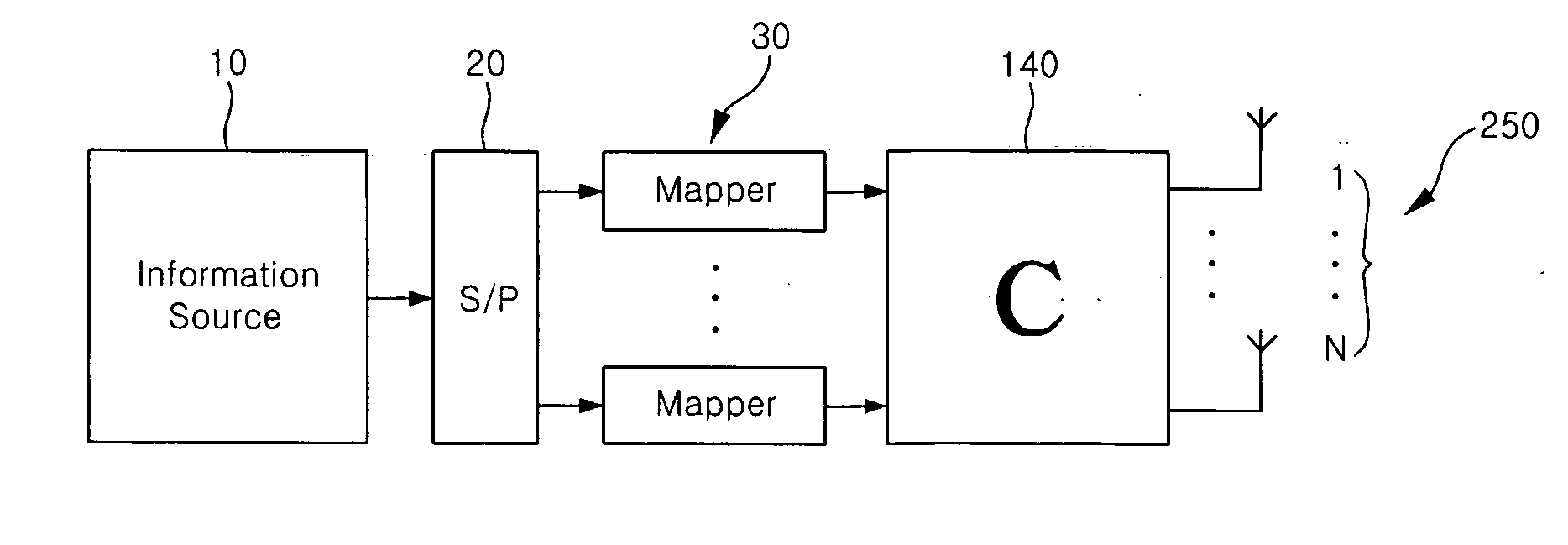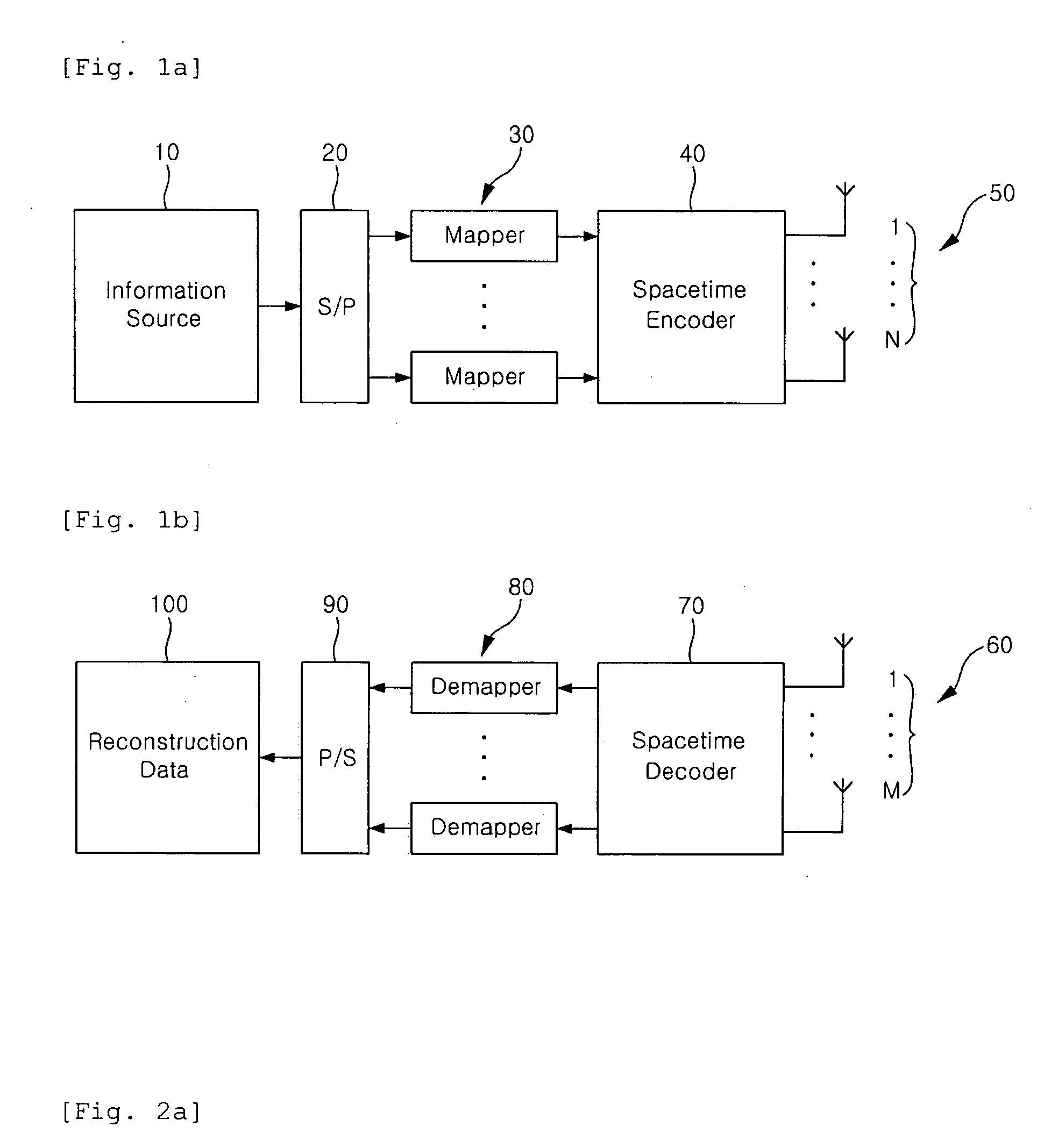STBC scheme using MMSE decision in a non quasi-static channel
a non-static channel and mmse decision technology, applied in diversity/multi-antenna systems, digital transmission, polarisation/directional diversity, etc., can solve the problems of increasing the cost of downlink mobile stations, the limited sdm scheme, and the increase of the number of receive antennas, so as to minimize the error of mean square, the effect of high performan
- Summary
- Abstract
- Description
- Claims
- Application Information
AI Technical Summary
Benefits of technology
Problems solved by technology
Method used
Image
Examples
Embodiment Construction
[0037] The following detailed description is of the best currently contemplated modes of carrying out the invention. The description is not to be taken in a limiting sense, but is made merely for the purpose of illustrating the general principles of the invention, since the scope of the invention is best defined by the appended claims. Hereinafter, the present invention will be described in detail by explaining exemplary embodiments of the invention with reference to the attached drawings. Like reference numerals in the drawings denote like elements.
[0038] According to one aspect of the present invention, a non quasi-static space time block codes (STBC) method is used for a wireless communication system where information symbols represented with code matrix C, channel matrix H and noise matrix N are coded in space time coding scheme and transmitted through a plurality of transmit antennas to a receive antenna. The method comprising the steps of: receiving one block of information s...
PUM
 Login to View More
Login to View More Abstract
Description
Claims
Application Information
 Login to View More
Login to View More - R&D
- Intellectual Property
- Life Sciences
- Materials
- Tech Scout
- Unparalleled Data Quality
- Higher Quality Content
- 60% Fewer Hallucinations
Browse by: Latest US Patents, China's latest patents, Technical Efficacy Thesaurus, Application Domain, Technology Topic, Popular Technical Reports.
© 2025 PatSnap. All rights reserved.Legal|Privacy policy|Modern Slavery Act Transparency Statement|Sitemap|About US| Contact US: help@patsnap.com



